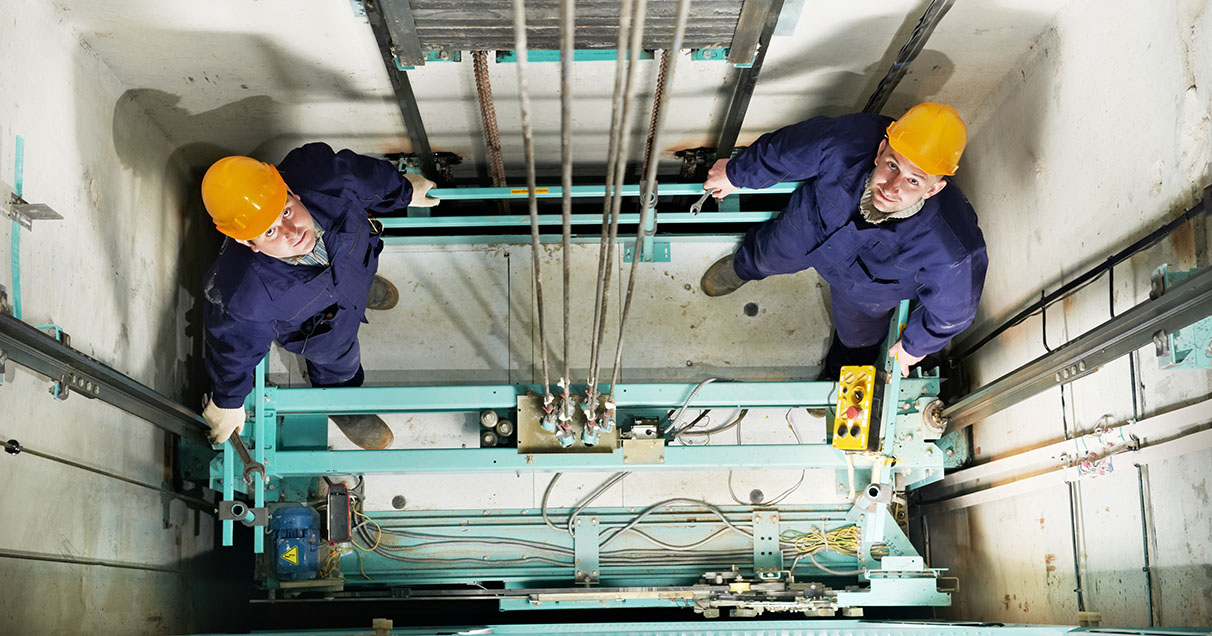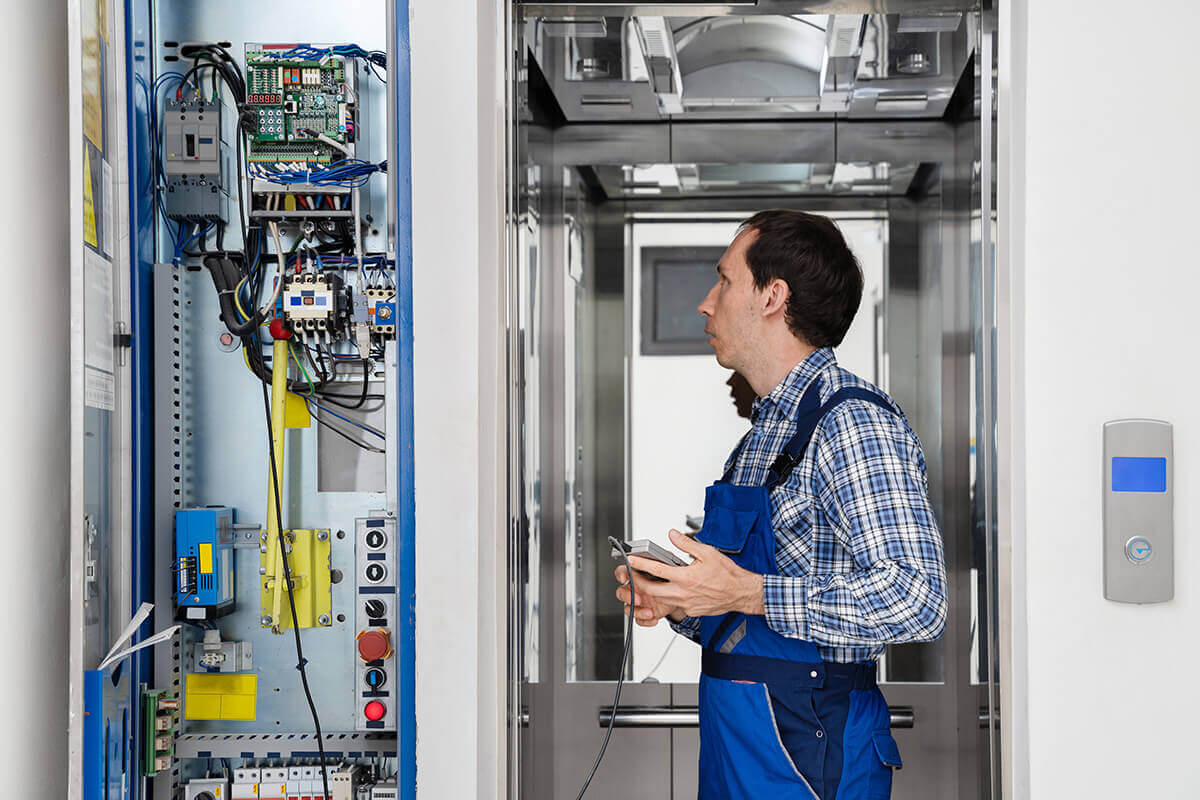Expert Lift Maintenance Repair Services to Ensure Safety
Expert Lift Maintenance Repair Services to Ensure Safety
Blog Article
Pro Tips for Preserving Your Lift in Top Problem: A Detailed Summary
Ensuring the optimum functioning of a lift system is important for a secure and efficient operation in numerous settings, from commercial storehouses to business structures. By sticking to a structured maintenance regimen and preemptively dealing with prospective concerns, lift proprietors can reduce expensive downtime and safety and security risks.

Significance of Regular Maintenance
Routine maintenance of your lift is crucial to ensure its optimal performance and longevity. By adhering to a normal upkeep schedule, you can identify and resolve possible issues prior to they intensify into expensive fixings or unanticipated downtime. Regular maintenance jobs such as lubricating moving components, evaluating for deterioration, and inspecting hydraulic systems can assist prevent malfunctions and make sure safe operation.
Overlooking regular upkeep not only compromises the performance of your lift however additionally poses safety and security dangers to customers and residential property. Elements that are not appropriately preserved might fall short unexpectedly, leading to crashes or damage to the lift itself. In addition, dealing with issues beforehand via maintenance can extend the lifespan of your lift and reduce the likelihood of major break downs.
In addition to boosting security and performance, routine upkeep can likewise save you money in the future. By purchasing preventive upkeep procedures, you can stay clear of expensive repairs or replacements that may emerge from overlooking the maintenance of your lift. On the whole, focusing on regular upkeep is necessary for optimizing the performance and long life of your lift system.
Top Elements to Inspect

Additionally, pay close attention to the lift's safety functions, such as emergency stop switches, safety and security sensors, and interlocking devices, to guarantee they are operating appropriately. On a regular basis inspect the lift shaft for particles or obstructions that might hinder the motion of the lift vehicle.
Proactive Fixing Strategies
By tracking metrics such as lift rate, electric motor temperature, and power consumption, upkeep groups can determine very early indications of possible issues and take corrective activities prior to they rise. Additionally, executing a preventive upkeep routine that consists of lubrication of moving parts, testing of emergency situation brakes, and calibration of sensors can proactively resolve common lift system issues.
Furthermore, buying training programs for maintenance team on repairing strategies specific to the lift version mounted can equip them to detect and solve concerns promptly. By staying in advance of possible issues through aggressive troubleshooting, lift drivers can make certain a smoother and much more dependable procedure while lessening the danger of unforeseen failures.
Essential Lubrication Practices
Applying proper lubrication techniques is important for guaranteeing the smooth procedure and long life of lift systems. Normal lubrication helps in reducing rubbing between moving parts, preventing wear and tear that can cause pricey repairs and downtime. When it concerns raise upkeep, following a rigorous lubrication timetable is essential.
Choosing the ideal lubricant is the primary step in efficient upkeep. Different elements of the lift system might require particular sorts of lubricating substances, such as grease or oil. Consult the producer's guidelines to determine the suitable lubricants for every part.

Consistently inspecting the condition of oiled parts is additionally important. Seek signs of extreme wear, contamination, or poor lubrication. Deal with any type of issues quickly to protect against additional damages and ensure the ongoing smooth procedure of your lift system. By focusing on proper lubrication practices, you can extend the lifespan of your lift and maximize its performance.
Safety Actions for Lift Operators
In order to keep a risk-free working environment and support operational performance, lift operators must carefully adhere to recommended safety methods, together with prioritizing crucial lubrication methods for ideal lift performance. Security measures for lift drivers are important to prevent accidents and ensure the smooth performance of the lift system.
Additionally, lift drivers must focus on personal safety equipment (PPE) such as headgears, gloves, and safety belt when working at heights or handling heavy lots. Clear communication amongst operators, maintenance technicians, and other employees is essential to stop misunderstandings that might bring about accidents. Finally, drivers ought to continue to be alert, concentrated, and avoid diversions while operating the lift to ensure the safety of themselves and others around.
Final Thought
Finally, keeping a lift in top condition is crucial for guaranteeing security and performance in procedures. Regular maintenance, complete examinations of key elements, positive troubleshooting, appropriate lubrication techniques, and adherence to safety and security actions are www.lift-maintenance-repair.co.uk/ important for extending the life expectancy of the lift and stopping crashes. By adhering to these standards, lift operators can guarantee the continued performance and security of their tools.
By sticking to a structured maintenance routine and preemptively addressing potential issues, lift owners can reduce costly downtime and security risks. Consistently check the lift shaft for particles or blockages that might hamper the activity of the lift car.In order to maintain a safe functioning atmosphere and promote functional effectiveness, lift operators should carefully adhere to recommended safety protocols, along with focusing on necessary lubrication practices for ideal lift performance. Safety procedures for lift drivers are critical to stop accidents and make sure the smooth functioning of the lift system. Routine maintenance, extensive evaluations of crucial elements, proactive troubleshooting, proper lubrication techniques, and adherence to safety and security procedures are important for lengthening the lifespan of the lift and avoiding crashes.
Report this page